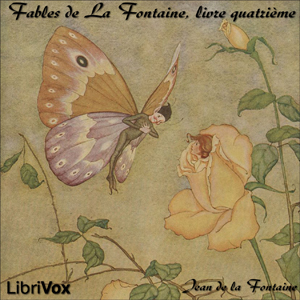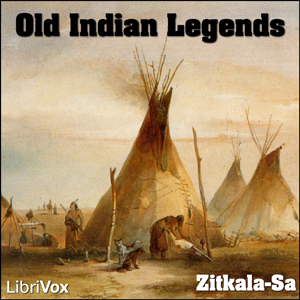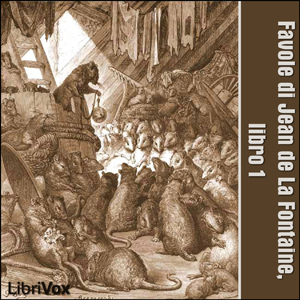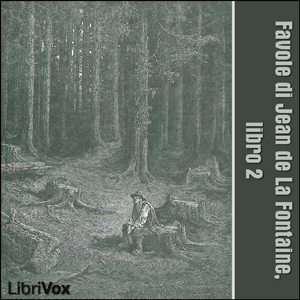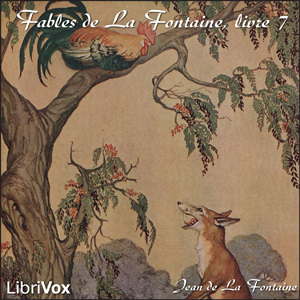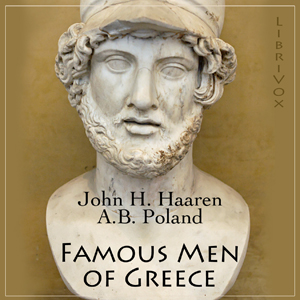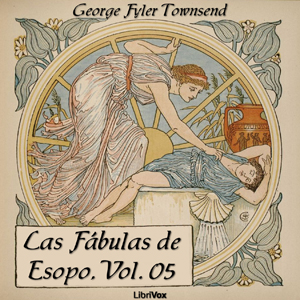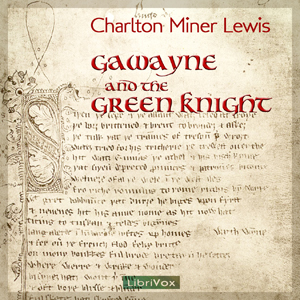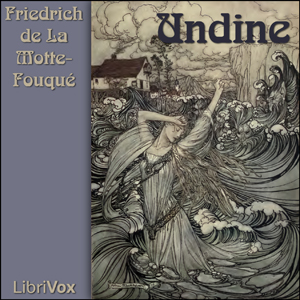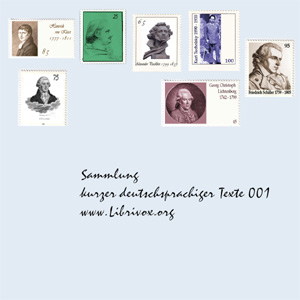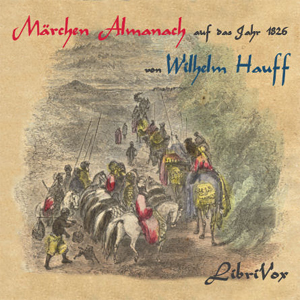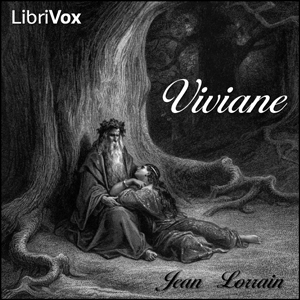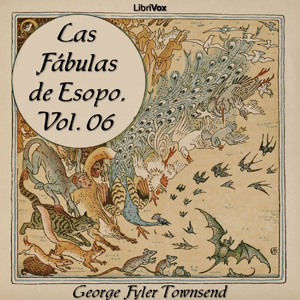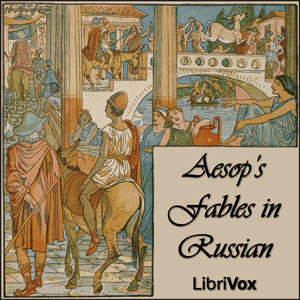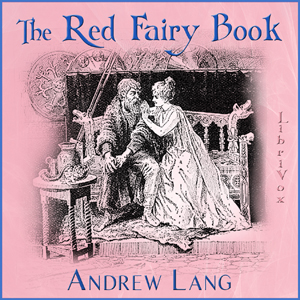"H. C. Andersen opfattes af de fleste mennesker først og fremmest som en børnebogsforfatter. Det er samtidig meget typisk for hans eventyr, at fortællingerne også rummer passager, der taler til den voksne læsers forståelse. Derfor kan såvel børn som voksne have glæde af at opleve - eller genopleve - historierne.
Samlingen her indeholder både kendte og mindre kendte eventyr og rummer et lille udsnit af H. C. Andersens mangfoldige forfatterskab."
Summary by Kristoffer Hunsdahl
12 episodes
Voici le quatrième livre des Fables de La Fontaine. Bien qu'écrites au XIIème siècle, l'Homme étant toujours l'Homme, elles restent d'actualité et nous enseignent bien des vérités sur la vie en société. (Résumé par Ezwa)
22 episodes
Fourteen Old Indian Legends by Native American ( Dakota ) Author Zitkala-sa. These Legends feature the exploits of Iktomi the Native American Trickster god. (summary by Robert Scott)
14 episodes
Nei 12 volumi delle "Favole" (1669 - 1693) Jean de La Fontaine rinnovò la tradizione esopica, rappresentando la commedia umana. Quest'opera dimostrò il suo amore per la vita rurale e attraverso animali simbolici ironizzò sulla vita della società dell'epoca. In the 12 volumes/books of "Favole" (1669 - 1693) Jean de La Fontaine renewed Aesop's tradition, representing the human comedy. This demonstrated his love for country life and by symbolic animals he ironized about his current years society's life. (Summary by Paolo Fedi)
23 episodes

In writing her 'Drama of Exile', Barrett's subject was 'the new and strange experience of the fallen humanity, as it went forth from Paradise into the wilderness'. The bizarre, lyrical scenes that follow powerfully describe the grief and guilt of Eve, the sorrowful pride of Lucifer, and the redeeming power of love. (summary by Patrick Beverley, quotation from the preface)Cast of Characters:
Lucifer – Patrick Beverley
Gabriel – Jay Saunders
Adam – David Kleparek
Christ – David Muncaster
Eve – JemmaBlythe
Narrator, Revel Voices, Aged Voices – Barry Eads
Chorus of Eden Spirits, Earth Spirits – Margaret Espaillat
Spirits of Trees – Andrea Lee
River Spirits, Second Spirit – Miriam Esther Goldman
Bird Spirits – vanrose
Flower Spirits – Chrystal Layton
Angel Chorus, First Semichorus, Second Semichorus, Morning Star, Youthful Voices – Neeru Iyer
First Spirit, Love Voices – Rissa Byrne
Infant Voices – Mia Saunders
Poet Voices – Aaron Elliott
Philosophic Voices – Simon Larois
Audio edited by Barry Eads
5 episodes
Nei 12 volumi delle "Favole" (1669 - 1693) Jean de La Fontaine rinnovò la tradizione esopica, rappresentando la commedia umana. Quest'opera dimostrò il suo amore per la vita rurale e attraverso animali simbolici ironizzò sulla vita della società dell'epoca. In the 12 volumes/books of "Favole" (1669 - 1693) Jean de La Fontaine renewed Aesop's tradition, representing the human comedy. This demonstrated his love for country life and by symbolic animals he ironized about his current years society's life. (Summary by Paolo Fedi)
20 episodes
Nei 12 volumi delle "Favole" (1669 - 1693) Jean de La Fontaine rinnovò la tradizione esopica, rappresentando la commedia umana. Quest'opera dimostrò il suo amore per la vita rurale e attraverso animali simbolici ironizzò sulla vita della società dell'epoca. In the 12 volumes/books of "Favole" (1669 - 1693) Jean de La Fontaine renewed Aesop's tradition, representing the human comedy. This demonstrated his love for country life and by symbolic animals he ironized about his current years society's life. (Summary by Paolo Fedi)
18 episodes
En mettant en scène les animaux, Jean de La Fontaine met en lumière les travers, les fourberies, l'orgueil, l'envie, les désirs, bref les qualités et les caractéristiques sociales des hommes. Chacune des 21 fables qui composent ce cinquième livre des fables de l'auteur ne manquent pas de mordre dans cette nature humaine qui nous définit. (De Jean LAMBERT)
21 episodes
Nei 12 volumi delle "Favole" (1669 - 1693) Jean de La Fontaine rinnovò la tradizione esopica, rappresentando la commedia umana. Quest'opera dimostrò il suo amore per la vita rurale e attraverso animali simbolici ironizzò sulla vita della società dell'epoca. In the 12 volumes/books of "Favole" (1669 - 1693) Jean de La Fontaine renewed Aesop's tradition, representing the human comedy. This demonstrated his love for country life and by symbolic animals he ironized about his current years society's life. (Summary by Paolo Fedi)
22 episodes
Nei 12 volumi delle "Favole" (1669 - 1693) Jean de La Fontaine rinnovò la tradizione esopica, rappresentando la commedia umana. Quest'opera dimostrò il suo amore per la vita rurale e attraverso animali simbolici ironizzò sulla vita della società dell'epoca. In the 12 volumes/books of "Favole" (1669 - 1693) Jean de La Fontaine renewed Aesop's tradition, representing the human comedy. This demonstrated his love for country life and by symbolic animals he ironized about his current years society's life. (Summary by Paolo Fedi)
21 episodes
Nei 12 volumi delle "Favole" (1669 - 1693) Jean de La Fontaine rinnovò la tradizione esopica, rappresentando la commedia umana. Quest'opera dimostrò il suo amore per la vita rurale e attraverso animali simbolici ironizzò sulla vita della società dell'epoca. In the 12 volumes/books of "Favole" (1669 - 1693) Jean de La Fontaine renewed Aesop's tradition, representing the human comedy. This demonstrated his love for country life and by symbolic animals he ironized about his current years society's life. (Summary by Paolo Fedi)
21 episodes
Nei 12 volumi delle "Favole" (1669 - 1693) Jean de La Fontaine rinnovò la tradizione esopica, rappresentando la commedia umana. Quest'opera dimostrò il suo amore per la vita rurale e attraverso animali simbolici ironizzò sulla vita della società dell'epoca. In the 12 volumes/books of "Favole" (1669 - 1693) Jean de La Fontaine renewed Aesop's tradition, representing the human comedy. This demonstrated his love for country life and by symbolic animals he ironized about his current years society's life. (Summary by Paolo Fedi)
18 episodes
Nei 12 volumi delle "Favole" (1669 - 1693) Jean de La Fontaine rinnovò la tradizione esopica, rappresentando la commedia umana. Quest'opera dimostrò il suo amore per la vita rurale e attraverso animali simbolici ironizzò sulla vita della società dell'epoca. In the 12 volumes/books of "Favole" (1669 - 1693) Jean de La Fontaine renewed Aesop's tradition, representing the human comedy. This demonstrated his love for country life and by symbolic animals he ironized about his current years society's life. (Summary by Paolo Fedi)
27 episodes
Nei 12 volumi delle "Favole" (1669 - 1693) Jean de La Fontaine rinnovò la tradizione esopica, rappresentando la commedia umana. Quest'opera dimostrò il suo amore per la vita rurale e attraverso animali simbolici ironizzò sulla vita della società dell'epoca. In the 12 volumes/books of "Favole" (1669 - 1693) Jean de La Fontaine renewed Aesop's tradition, representing the human comedy. This demonstrated his love for country life and by symbolic animals he ironized about his current years society's life. (Summary by Paolo Fedi)
16 episodes
Nei 12 volumi delle "Favole" (1669 - 1693) Jean de La Fontaine rinnovò la tradizione esopica, rappresentando la commedia umana. Quest'opera dimostrò il suo amore per la vita rurale e attraverso animali simbolici ironizzò sulla vita della società dell'epoca. In the 12 volumes/books of "Favole" (1669 - 1693) Jean de La Fontaine renewed Aesop's tradition, representing the human comedy. This demonstrated his love for country life and by symbolic animals he ironized about his current years society's life. (Summary by Paolo Fedi)
19 episodes
Dans ce livre sixième comme dans tous les autres livres des Fables de La Fontaine, vous serez à même de constater la fine observation des éternels comportements humains transposés dans le monde animal. (Introduction de Jean Lambert)
22 episodes
Nei 12 volumi delle "Favole" (1669 - 1693) Jean de La Fontaine rinnovò la tradizione esopica, rappresentando la commedia umana. Quest'opera dimostrò il suo amore per la vita rurale e attraverso animali simbolici ironizzò sulla vita della società dell'epoca. In the 12 volumes/books of "Favole" (1669 - 1693) Jean de La Fontaine renewed Aesop's tradition, representing the human comedy. This demonstrated his love for country life and by symbolic animals he ironized about his current years society's life. (Summary by Paolo Fedi)
9 episodes
Nei 12 volumi delle "Favole" (1669 - 1693) Jean de La Fontaine rinnovò la tradizione esopica, rappresentando la commedia umana. Quest'opera dimostrò il suo amore per la vita rurale e attraverso animali simbolici ironizzò sulla vita della società dell'epoca. In the 12 volumes/books of "Favole" (1669 - 1693) Jean de La Fontaine renewed Aesop's tradition, representing the human comedy. This demonstrated his love for country life and by symbolic animals he ironized about his current years society's life. (Summary by Paolo Fedi)
27 episodes
"Andrew Lang's Fairy Books or Andrew Lang's "Coloured" Fairy Books are a twelve-book series of fairy tale collections. Although Andrew Lang did not collect the stories himself from the oral tradition, the extent of his sources (who had collected them originally), made them an immensely influential collection, especially as he used foreign-language sources, giving many of these tales their first appearance in English. As acknowledged in the prefaces, although Lang himself made most of the selections, his wife and other translators did a large portion of the translating and telling of the actual stories." (summary from wikipedia)
49 episodes
Dans ce septième livre, Jean de La Fontaine continue de dépeindre les travers des humains. Toutefois, l'approche littéraire se complexifie, le texte est généralement plus long que dans les livres précédents et le recours aux animaux le cède, dans huit de ces fables, à la mise en scène de l'homme lui-même. (Introduction de Jean Lambert)
19 episodes
Nine original and, yes, unlikely fairy-tales, which include stories of the arithmetic fairy, the king who became a charming villa-residence and the dreadful automatic nagging machine.All are classic-Nesbit: charming, novel and not afraid to squeeze in a moral or two -- told with proper fairy-tale style.Summary by Cori
9 episodes
Dinarzade et Schahriar étant toujours pendus à ses lèvres, Scheherazade poursuit ici ses récits captivants, prolongeant ainsi ses jours, nuit après nuit. Dinarzade and Shahryar still captivated by her fascinating stories, Scheherazade goes on telling them, thus prolonging her life, night after night. (Summary by Ezwa)
106 episodes
Le Livre huitième des Fables de La Fontaine est le plus volumineux des douze livres qui composent l'oeuvre fabuliste du célèbre écrivain. Celui-ci délaisse d'avantage les animaux dans ce livre, pour mettre en scène l'homme lui-même dans 15 des 27 fables de ce livre. De La Fontaine nous Interpelle: ses fables deviennent plus longues et affichent un écriture plus sophistiquée que dans les livres précédents. Écoutez combien, sous la plume du fabuliste, l'homme est cette bête si curieuse et fascinante. (Jean LAMBERT)
27 episodes
La Chasse-galerie (The Hunt of Gallery) also known as "The Bewitched Canoe" is a French Canadian tale of voyageurs who make a deal with the Devil, a variant of the Wild Hunt. In Quebec, the legend of the "chasse-galerie", or the bewitched canoe, is a favourite. Its most famous version was written by Honoré Beaugrand (1848 - 1906?). (From Wikipedia) Il s'agit de l'histoire de bûcherons de la Gatineau qui font un pacte avec le diable afin de faire voler un canot pour qu'ils puissent rendre visite à leurs femmes. Il devront cependant éviter de blasphémer durant la traversée, ne point heurter le canot aux clochers d'une église et être de retour avant six heures le lendemain matin. Dans le cas contraire ceux-ci perdraient leurs âmes. La version la plus connue est celle écrite par Honoré Beaugrand.(de Wikipedia)
5 episodes
Anfang des 19. Jahrhunderts begannen die Brüder Jacob und Wilhelm Grimm, traditionelle, bisher vor allem mündlich weitergegebene Erzählungen zusammenzutragen. Diese Sammlung ist als die Märchen der Gebrüder Grimm weltbekannt geworden und umfaßt so berühmte Geschichten wie Rapunzel, Hänsel und Gretel, Rumpelstilzchen, Rotkäppchen und viele andere.
(Zusammenfassung von Rainer)
31 episodes
A collection of King Arthur's adventures, from his ascent to King of Britain to his death. This book includes some of the crucial Arthurian legends about Sir Lancelot, the Knights of the Round Table, Queen Guinevere, and the search for the Holy Grail. (Summary by Robin Cotter)
21 episodes
Jean de La Fontaine poursuit son oeuvre pédagogique par la mise en scène des turpitudes et travers des humains. Le fabuliste rafine son écriture, les textes de ce neuvième livre sont plus étendus et le style plus travaillé.Pour la première fois, Jean de La Fontaine s'adresse nommément à un représentant de la noblesse dans un discours adressé à Madame de la Sablière. Ce texte sera repris et complété dans la première fable du livre suivant (dixième): Les deux rats, le Renard et l'Oeuf. (Jean Lambert)
19 episodes
Voici le cinquième des douze livres des Fables de La Fontaine. Celles-ci datent du XVIIe siècle et sont lues par des lecteurs de divers horizons. This is the fifth book from a collection of 12. The fables were written and first published in the 17th century. They portray humans' behaviour in the society. (Summary by Ezwa)
21 episodes
Les Fables de La Fontaine constituent la principale œuvre poétique du classicisme, et l'un des plus grands chefs d'œuvre de la littérature française. Le tour de force de La Fontaine est de donner par son travail une haute valeur à un genre qui jusque-là n'avait aucune dignité littéraire et était réservé aux exercices scolaires de rhétorique et de latin. Les Fables ont été écrites entre 1668 et 1694. La plupart mettent en scène des animaux anthropomorphes et contiennent une morale. En voici le cinquième livre. (Adapté de Wikipedia par Ezwa)
21 episodes
A comic rendering in verse of well-loved Fairy Tales of the Brothers Grimm, each ending with a moral and full of puns. The titles of the tales themselves make another verse.(Summary by Annise)
20 episodes
Anfang des 19. Jahrhunderts begannen die Brüder Jacob und Wilhelm Grimm, traditionelle, bisher vor allem mündlich weitergegebene Erzählungen zusammenzutragen. Diese Sammlung ist als die Märchen der Gebrüder Grimm weltbekannt geworden und umfaßt so berühmte Geschichten wie Rapunzel, Hänsel und Gretel, Rumpelstilzchen, Rotkäppchen und viele andere.
(Zusammenfassung von Rainer)
32 episodes
The Blackfeet were hunters, travelling from place to place on foot. They used implements of stone, wood, or bone, wore clothing made of skins, and lived in tents covered by hides. Dogs, their only tame animals, were used as beasts of burden to carry small packs and drag light loads.
The stories here told come down to us from very ancient times. Grandfathers have told them to their grandchildren, and these again to their grandchildren, and so from mouth to mouth, through many generations, they have reached our time.
26 episodes
《聊斋志异》,清代短篇小说集,是蒲松龄的代表作,在他40岁左右时基本完成,此后不断有所增补和修改。“聊斋”是他的书屋名称,“志”是记述的意思, “异”指奇异的故事。全书有短篇小说491篇,内容十分广泛,多谈狐、魔、花、妖,以此来概括当时的社会关系,反映了17世纪中国的社会面貌。书中写的是一个花妖鬼狐的世界,既有对如漆墨黑的社会现实的不满,又有对怀才不遇、仕途难攀的不平;既有对贪宫污吏狼狈为奸的鞭笞,又有对勇于反抗,敢于复仇的平民的称赞;而数量最多、质量上乘、写得最美最动人的是那些人与狐妖、人与鬼神以及人与人之间的纯真爱情的篇章。 (来自百度百科) (Summary from Baike.baidu.com)
20 episodes
Famous Men of Greece is a series of biographical sketches written for the purpose of making the study of history lively and interesting by giving insight into the men who lived during this time. (Summary by Laura Caldwell)
33 episodes
The classic Aesop's Fables have been translated to every language for hundreds of years. The fables, told in the form of allegories, give us universal, worldly advice. The use of animals and ancient gods makes the lessons unbiased and impartial. Short and smart, these fables entertain and enrich our lives. In this volume you will find 30 of the 300 fables we offer you in Spanish.
Las clásicas Fábulas de Esopo han sido traducidas a todos idiomas por cientos de años. Las fábulas, en forma de alegorias, nos dan consejos en una forma universal. El uso de animales y dioses antiguos hace que las lecciones sean imparcial. Cortitas y sabias, cada fábula nos entretiene y enriquese nuestras vidas. En este volúmen encontrará 30 de las 300 fábulas que le ofrecemos en Español.
30 episodes
Published in 1903, Gawayne and the Green Knight is a modern-language retelling of Sir Gawain and the Green Knight, a 14th-century verse romance following a young knight of the Round Table. During Christmas celebrations, a mysterious, entirely green knight presents a challenge to King Arthur's court: that any may strike the stranger a single blow with his green axe, provided he assent to receiving the same a year later. Gawayne accepts the challenge, and its unexpected outcome leads to a great test of his courage and knighthood. A significant addition to this version is the Lady Elfinhart, whose back-story and romance with Gawayne are tightly interwoven with the plot. (Summary by Jerome Lawsen)
4 episodes
Undine is a novel by Friedrich de la Motte Fouqué concerning Undine, a water spirit who marries a Knight named Huldbrand in order to gain a soul. It is an early German romance, which has been translated into English and other languages. The novel served as inspiration for two operas in the romantic style by Ernst Theodor Amadeus Hoffmann and Albert Lortzing, respectively, and two ballets: the nineteenth century Ondine and the twentieth century Undine. An edition of the book was illustrated by Arthur Rackham. In The Fantastic Imagination, George MacDonald writes, "Were I asked, what is a fairytale? I should reply, Read Undine: that is a fairytale ... of all fairytales I know, I think Undine the most beautiful." (Summary from Wikipedia)
19 episodes
Diese Sammlung umfasst verschiedene deutschsprachige Texte aller Genres, Fiktion, Non-Fiktion und Lyrik.
Eine Liste weiterer kurzer Aufnahmen (Erzählungen, Gedichte, Märchen, Essays) in anderen LibriVox Sammlungen gibt es hier.
"Märchen vom Fischer und dem Fischlein" übersetzt von Friedrich Fiedler (1859-1917)"Eine teure Liebesnacht" übersetzt von B. Rüttenauer
10 episodes
Hauffs Märchen entstanden in der Spätromantik. Der erste Band mit der Rahmenerzählung “Die Karawane” zeichnet sich durch hohes Einfühlungsvermögen in die orientalische Lebensweise aus.Er enthält neben den bekannte Märchen “Kalif Storch” und “Der kleine Muck” “Die Geschichte von dem Gespensterschiff”, “Die Geschichte von der abgehauenen Hand”, “Die Errettung Fatmes” und “Das Märchen vom falschen Prinzen”.“Das Gespensterschiff” und “Die abgehauene Hand” sind nach heutigem Empfinden für Kinder nicht geeignet.
(Summary by Wikipedia and Hokuspokus)
9 episodes
Toujours observateur des comportements humains, Jean de La Fontaine ne cesse de les mettre en scène dans ces 16 fables, tantôt en invitant le genre animal à caricaturer l'homme tantôt en confiant sa propre bêtise à l'homme lui-même. Ce dixième livre s'inscrit dans la continuité de l'oeuvre du grand fabuliste. ( Jean Lambert )
16 episodes
Märchen über ein Feenwesen, dass in einem Myrtenbaum lebt und einem Prinzen, der das Feenwesen liebt.(Summary by Wassermann)
5 episodes
The Fairy Ring, originally published in 1910, is a collection of 63 fairy tales from around the globe. It includes such well-known favorites as "History of Jack the Giant-Killer", "The Frog Prince","Rumpel-stilts-ken", and "Snow-white and Rose-red", among many others. Children of all ages will enjoy these stories. (Summary by Paul Williams)
65 episodes

Das skurriles Märchen „Meister Floh“ erzählt die Geschichte des frauenscheuen Träumers Peregrinus Tyß und dessen Begegnung mit dem weisen und gelehrten Meister der Flöhe.
Am Weihnachtsabend bringt Peregrinus den Kindern eines armen Buchbinders Geschenke und trifft dort die schöne und geheimnisvolle Dörtje Elverdink, die ihn bittet, sie in sein Haus aufzunehmen. Dort besteht sie auf der Herausgabe eines Gefangenen, von dem Peregrinus allerdings gar nichts weiß. Zur selben Zeit gastiert ein Flohbändiger und Mikroskopist in der Stadt, dem zunächst seine Flöhe und dann seine schöne Nichte Dörtje abhanden gekommen sind. Auch Georg Pepusch, eine Freud des Peregrinus Tyß, ist auf der Suche nach Dörtje, die er für die wieder zum Leben erweckte Prinzessin Gamaheh aus Famagusta hält.
Peregrinus macht die Bekanntschaft des Meister Flohs, der lange ein Gefangener des Flohbändigers war und Peregrinus nun um Schutz bittet. Die schöne Dörtje, die tatsächlich die Prinzessin Gamaheh ist, dürfe ihn um keinen Preis in ihre Gewalt bekommen, da sonst das ganze Volk der Flöhe wieder zur Sklaverei verurteilt sei. Obwohl Peregrinus von Dörtje bezaubert ist, verspricht er, dem Meister Floh zu helfen.
(Summary by Hokuspokus)
14 episodes
« Comment, Viviane, la fille onduleuse aux crins d'or, courtisane galloise experte en félonie, des douze preux d'Arthur ayant été honnie pour sa langue envieuse et ses viles amours, se vengea. » « Ainsi donc tu le veux, couleuvre aux yeux de femme ? Apprends donc la légende. » (Extraits adaptés) How the perfidious Viviane took revenge on Arthur's valiants, who held her in contempt, by seducing Myrdhinn, the sorcerer. So, that is what you want, grass-snake with woman's eyes? Then, learn the legend. (Summary by Ezwa)
1 episodes
Ce onzième livre des fables de Jean de La Fontaine est celui qui contient le plus petit nombre de fables: 10. Toutefois, les textes de ces fables sont plus élaborés que ceux des textes des premiers livres du fabuliste. Le message est plus songé et aussi... moins accessible, ce qui pourrait expliquer que ces fables soient moins connues du grand public. (de Jean Lambert)
10 episodes
The classic Aesop's Fables have been translated to every language for hundreds of years. The fables, told in the form of allegories, give us universal, worldly advice. The use of animals and ancient gods makes the lessons unbiased and impartial. Short and smart, these fables entertain and enrich our lives. In this volume you will find 30 of the 300 fables we offer you in Spanish.
Las clásicas Fábulas de Esopo han sido traducidas a todos idiomas por cientos de años. Las fábulas, en forma de alegorias, nos dan consejos en una forma universal. El uso de animales y dioses antiguos hace que las lecciones sean imparcial. Cortitas y sabias, cada fábula nos entretiene y enriquese nuestras vidas. En este volúmen encontrará 30 de las 300 fábulas que le ofrecemos en Español.
30 episodes
Voici le premier livre des Fables de Jean de La Fontaine publié par le fabuliste à l'âge de 47 ans. Inspiré de l'oeuvre du fabuliste grec Ésope, Jean de La Fontaine met en scène les animaux pour mieux décrire les éternels comportements humains. Éternels ? Oui ! Car plus de trois siècles après leur première publication, les lecteurs y reconnaissent la société contemporaine. (de Jean Lambert)
23 episodes
A collection of the most famous from Aesop's fables in Russian language. Translated by Tolstoj L.N. and Alekseev V.A.
39 episodes
The most careless reader can hardly fail to see that many of the Tales in this volume have the same groundwork as those with which he has been familiar from his earliest youth. They are Nursery Tales, in fact, of the days when there were tales in nurseries--old wives' fables, which have faded away before the light of gas and the power of steam. (Excerpt from Popular Tales from the Norse.)
80 episodes
The Red Fairy Book is the second in a series of twelve books known as Andrew Lang's Fairy Books or Andrew Lang's "Coloured" Books. The series was immensely popular and proved of great influence in children's literature, increasing the popularity of fairy tales over tales of real life. (Summary adapted from Wikipedia)
38 episodes

